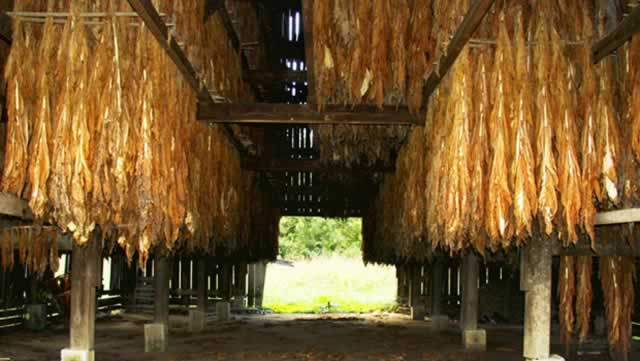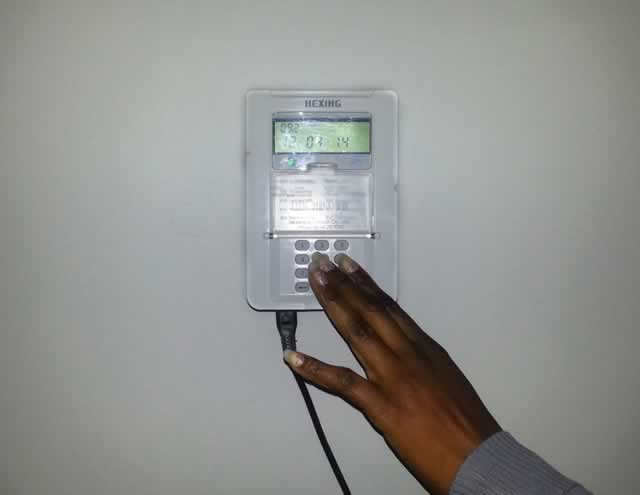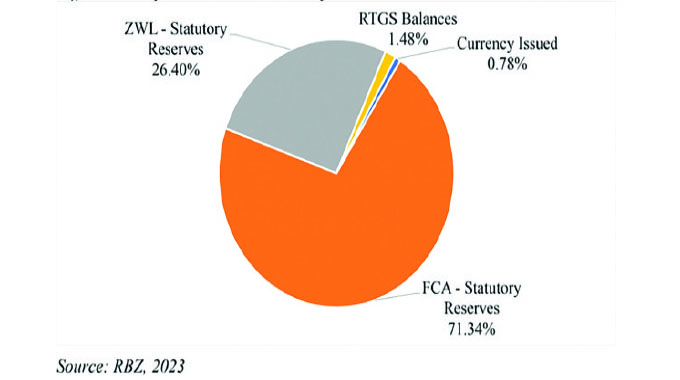How to cure the tobacco leaf

Curing of the tobacco leaf is a process of developing and preserving the quality, flavour and aroma of tobacco in addition to removing moisture from the leaf.
Curing is more than just drying the leaf as it helps the leaf ripen thereby improving chemical and physical structure that are necessary for high quality cured leaf.
It is estimated that 75 percent of the market value of the leaf is based on its colour, hence the major objectives for curing flue cured tobacco are providing temperature and humidity that will preserve the leaf and retain quality through timely drying.
The curing process comes in three phases, namely colouring, lamina (leaf) drying and mid rib (leaf stem) drying. Curing period vary with the positions of the tobacco leaves on the plants, type of the curing barn used as well as the local conditions.
The degree of vent opening during colouring will depend on the condition of the tobacco and the prevailing weather conditions.
When dealing with large thin leaf, which tends to turn black during curing, it is important to cure this leaf as rapidly as possible.
Colour fixing is done by applying heat to the tobacco leaves at operational temperatures of 30–40 degrees Celsius and at a relative humidity of about 85 percent and this process can be done in one to two days.
The leaf should remain turgid for the first 12 to 18 hours, but should then lose moisture steadily so that by the end of colouring it will have lost 30 percent of its water content.
It is important to achieve a severe wilt because it is essential to halt the major chemical processes at the right time as any delay will cause significant losses in both weight and quality as the leaf continues to respire.
Colour is important as it indicates the chemical changes that would have taken place and is used as an index of leaf quality.
The next phase is the drying of the leaf which is done at an operational temperatures of 40-50 degrees Celsius, a process that takes two to three days.
This drying phase begins with the wilt and so overlaps the first to a large extent.
The leaf must be dried as rapidly as possible after reaching the best balance of starch and sugar, but this in itself requires an optimum balance of temperature and ventilation.
Too much temperature at a high moisture content heats the leaf instead of drying it, which causes discolouration and reduces quality (sponging) and too low a temperature slows drying.
Once the lamina of the leaf is dry, the midrib needs to be dried out by straight forward dehydration.
Drying the leaf stem which is done at an operational temperature of between 65-70 degrees Celsius diminishing humidity takes four to five days.
If there is inadequate ventilation during colour fixing this results in barn rot and this can be averted by ventilating early and packing less.
Another problem that emerge during the curing stage is sponge or browning which is evident of inadequate ventilation during drying.
The best way to handle this ventilation or reducing the rate at which you will be increasing temperature.
Over colouring results in the leaf turning brownish and this is a result of drying the leaf too slowly and not killing the leaf soon enough.
If the aforementioned faults persist and defy correction, chances are the barns are over packed and recourse would be to tie less per clip or string, before the barn is repaired in preparation for the following season.
Once the cure is complete, the barn should be cooled as quickly as possible and no attempt should be made to condition a hot barn.
It is ideal if a barn can be left to pick up conditions naturally but it can be speeded by adding moisture by means of water on the floor, steam or humidifiers. Where steam is used, it must be at low pressure and barns should be unloaded tier by tier as condition permits.
When unloading the tobacco from the curing barn, the leaf should be soft but the midrib breakable near the base.
After completion of the curing cycle, the barn is “conditioned” by adding 12 to 15 percent moisture back into the leaf to enable easy handling.
To minimise breakage, tobacco should rough bulked for approximately 24 hours to allow moisture to spread evenly through the leaf.
For any additional information please contact TIMB on telephone numbers 0772145166 /9 or 0279-22082/ 21982 or 025-3439 or 067-24268 /29246 or 0277-2700 or 064-7280 or 0271-6772 or E-mail: [email protected] or visit our website on www.timb.co.zw








Comments